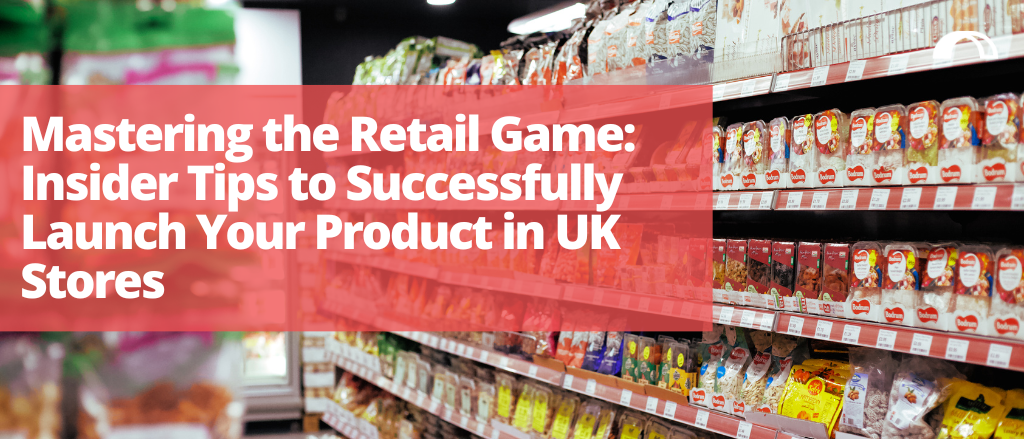At Bridgehead, we have over 100 years of combined experience working with retailers, many of our team are from retail buying backgrounds. Our CPG (Consumer Packaged Goods) Client Director, Simon Betts shares his top tips for helping brands to access retailers that have previously been out of reach. If you’ve struggled to get your products on the shelves, read on.
Simon has worked in a variety of buying roles including Carphone Warehouse, Dixons, and more recently Tesco’s. He knows what retailers are looking for, and supports our clients in getting their products on those highly-sought after retail space! Here he shares his top 5 tips when pitching to retailers.
1. Be thoroughly prepared
You need to be thoroughly prepared before you approach the buyer.
Firstly, you must know your USP (Unique Selling Point). What is the benefit of your product to the end user? Why should customers pick your product over other options in the same category?
Once you have these answers, Simon suggests getting real feedback from your target audience. Go to the retailer you’re intending to get a listing with, question customers, observe the store, you could even go as far as getting pictures of your product on the shelf to show the buyers how your product will stand out on the shelf (or take back ideas to redesign your packaging if it doesn’t!).
Also make sure you are future proof to the buyer. What other ideas are coming down the line? When will they be ready? What will the benefits of these new products be?
You only get one shot to make a good impression on the buyer, so it’s important to know the buyer you are approaching – hiring an expert is a good idea here!
2. Recognise the value that online retail and social media can add to your brands
Buyers are becoming more interested in what brands are doing in D2C (Direct to Consumer) sales. If you don’t already have a digital presence, I’d highly recommend setting it up, and start to build a social media following.
Direct engagement with consumers gives you access to free market research and feedback, and allows you to hone your product and your range ready to expand into new verticals and retailers.
Customers are interested in the journey of a brand, and many brands are building up a loyal following – you can use this as evidence to show buyers the demand of your product is already there, making the decision process easier for the buyer. If you have a high percentage of repeat orders, make sure to mention that – loyalty is important!
3. Be prepared for the work and costs involved in getting listed with the BIG retailers
There are often hidden costs involved in supplying to big retailers, as well as a lot of admin that you need to allow time for.
You may need to sign up for access to their systems, you may need to pay to list your products, there may be marketing fees involved, and sales calendars to agree to.
Are you prepared for the minimum order size? Do you know how you will ship your goods to the various distribution centres the retailer may have across the country?
Once you have a big retail listing, can you sustain supply to them? Are you prepared to alter your packaging in order to meet the retailers’ sustainability requirements?
Getting listed in one of the major retailers in the UK could be more costly to your business in the long run. It is worth focusing on some of the smaller retailers, convenience stores, wholesalers, local and online first. This will help build up your knowledge, help understand the retail market and give you a steady income that will allow you the time, space and funding to be able to start approaching the larger retail companies.
4. Getting listed is only half the battle – the hard work starts here!
Once you get listed, you need to make sure the product sells, otherwise you risk getting delisted.
Do you have access to enough stock in order to fulfil the orders? Can you commit to the lead times that have been specified? What is your in-store sales strategy? What about the online sales strategy? Deals, unique offers?
Once your product is in store, keep on top of the sales data. Drive sales towards the new listing and if things aren’t going to plan, speak to the buyer and see what else can be done – you need to be proactive, and support promotions and sales. Make sure to be aware of range reviews, and be ready to propose new product ranges.
5. Retailers aren’t the only route
Retailers have regional areas as well as national managers – it can be easier to secure a listing on a regional level, and prove your product success before going for the national listings.
You can also consider a distributor who can get your product listed in smaller chains first, not only securing you regular revenue but also allowing you to learn from the data and processes. Having distributors on board can also help when talking to investors.
If you’re looking at grocery stores, another option to consider is convenience stores – during the pandemic, convenience retail boomed, forcing stores to stock a much bigger range. Convenience stores, such as Budgens, Londis, Premier and many others, have thousands of locations, giving you access to a potentially huge customer base.
The final option is to go via a wholesaler. Some even have their own convenience stores, giving you instant access to those customers.
If you’ve tried without success to get into retailers, perhaps it’s time to seek expert advice.
At Bridgehead, we hand-pick a team specific to each project to ensure they know exactly what’s needed at every pitch meeting, as well as use their existing networks for rapid results. We’re not just another consultancy who develops strategies and leave you to implement it; we roll our sleeves up, get our hands dirty and we do the work. Our proven processes and methodology are guaranteed to bring in results in 90 days. Ready to take your business to the next level? Get in touch.






